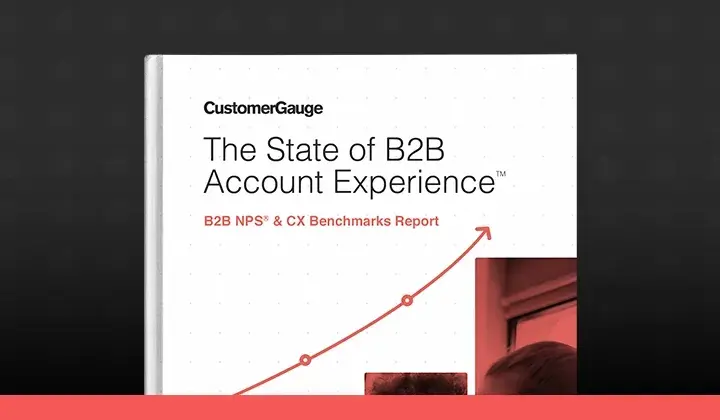You’re running a Net Promoter system (NPS) — great! So you know its value.
However, let's not forget that the NPS score itself is not the goal. The goal is to transform your business into one that delivers an exceptional customer experience.
The by-product of this is:
Reduced churn
Improved customer lifetime value
Increase revenues
Lower cost to acquire and serve your customers
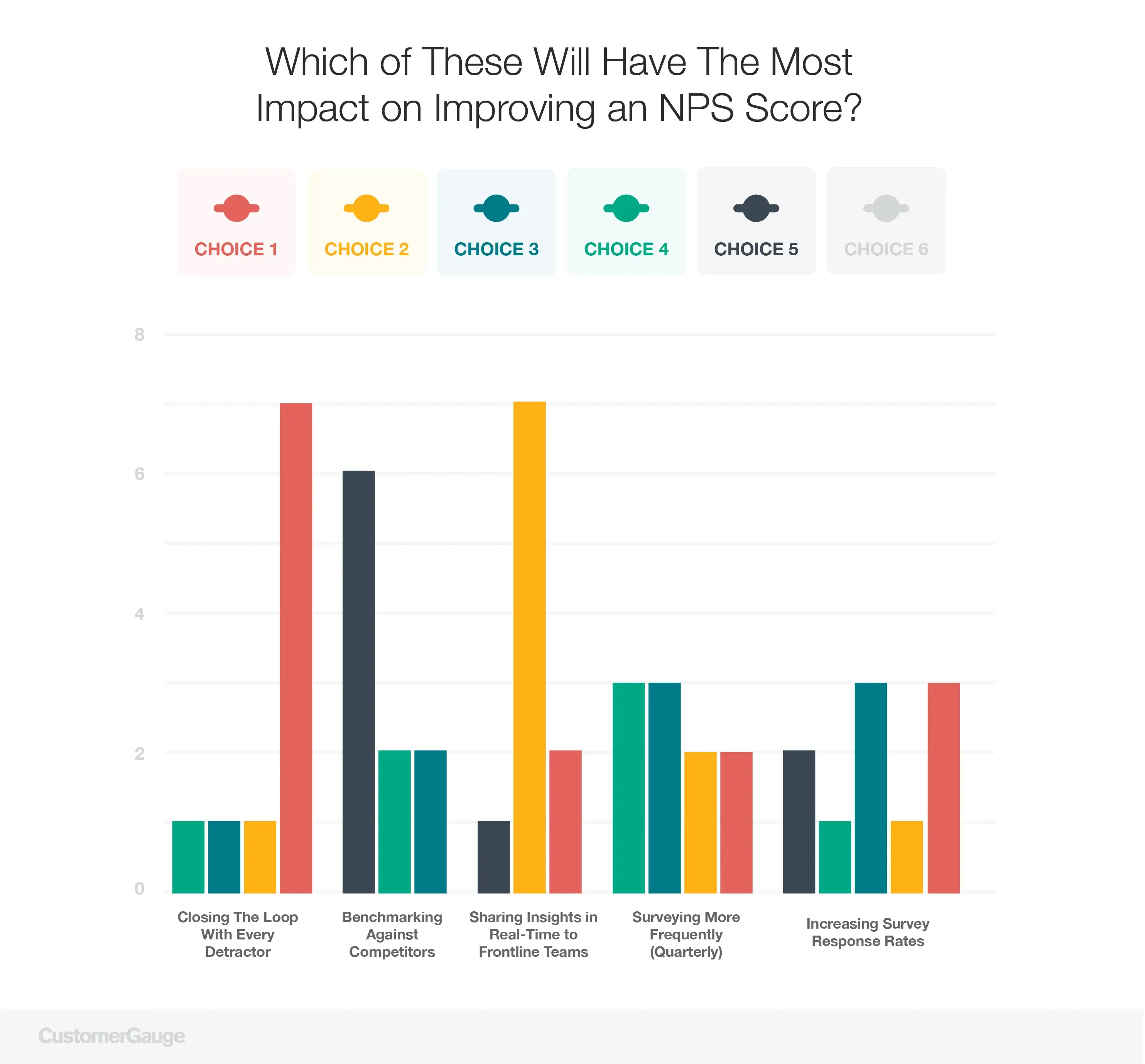
- Your NPS score is impacted by more than just your experience. A wide variety of factors must be considered.
- Your NPS surveys must be short, well-timed and delivered in the right way to improve uptake.
- Your closed-loop process is critical. The evidence (read step 8) suggests it can 3x your NPS score.
What Can Affect Your NPS Score?
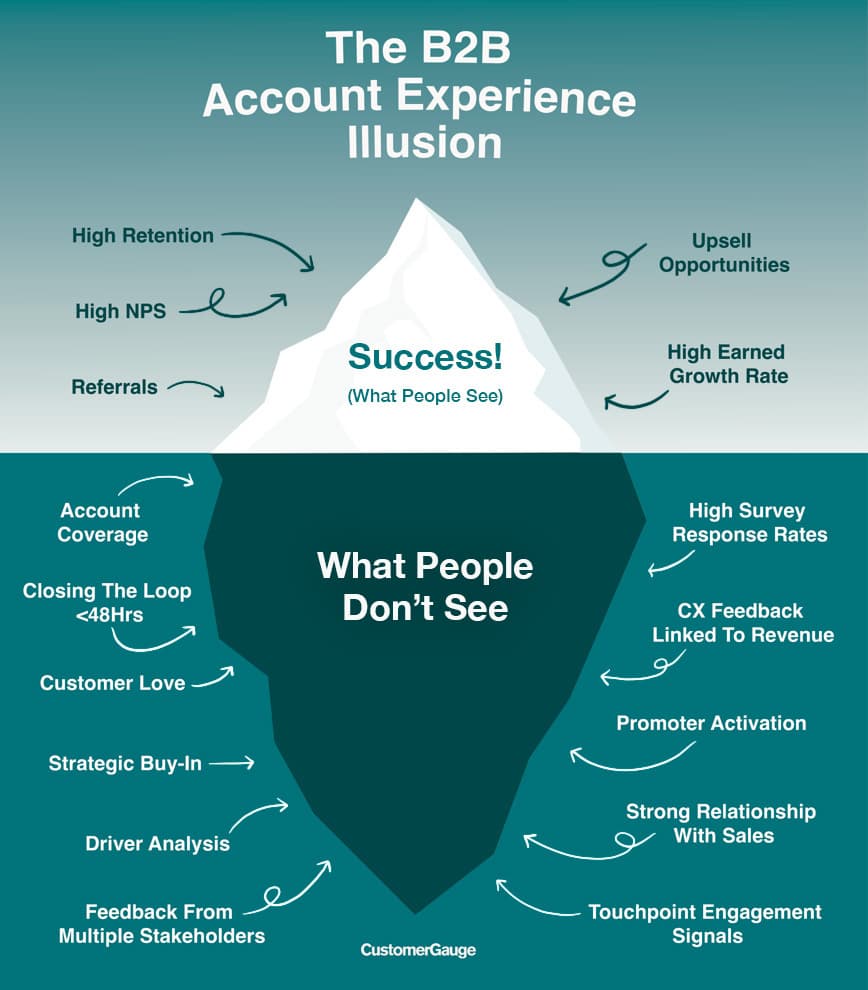
To refresh, we know that NPS is a market research metric used to measure the likelihood of retaining customers based on a single-question survey:
On a scale from 0-10, how likely are you to recommend our product/service/brand to a friend, colleague, or family member?
Those who respond are divided into three groups:
🤩 Promoters (your most satisfied customers) give you a 9 or 10.
😐 Passives give you a 7 or 8.
🤕 Detractors give you somewhere between 0 and 6.

Once businesses receive their score, they’re not always pleased with the outcome — what could have caused this?!
Just as there are various ways to improve your score, there are many to worsen it, too.
Factors that could affect your Net Promoter Score include:
Closing the loop (not quick enough or at all): Your customer service is everything. So, ignoring an unhappy customer’s feedback (Detractor) is a surefire way of having your score negatively impacted, especially when they went out of their way to suggest a solution — they could have said nothing and quietly churned (Non-Respondents).
Your product or service’s performance. With your business, you need to know whether you’re meeting not only the industry standard but customer expectations. If you’re a consumer packaged goods (CPG) company with inventory shortages compared to your competitors, it’s likely your NPS will reflect that.
Poor survey design and delivery. Who you’re asking, how you’re asking for it, and where all play a key factor in improving NPS. Asking 20 questions per survey once a year through a channel your customers don’t use won’t provide the accurate customer data needed to grow.
Lack of tracking progress. If you aren’t monitoring trends over time, your program will forever be at a standstill. Accelerating NPS begins with tracking data and eventually identifying root causes that will provide a solution to what is affecting your business.
No organizational buy-in for furthering improvements. Like having any new initiative become a success at your company, everyone needs to be on board. If your company from the top down doesn’t understand the goal and role they play, positive change will be hard to achieve.
Although these causes can be intimidating (and you may even be resonating with a few) we wouldn’t have shared them if we didn’t have solutions.
🔎 Expert Insight #1:
“Don't focus on the score. It's the first and most common mistake to make. Think of it as an outcome, not the goal. The goal is to change behaviors, and NPS results will reflect your success in being able to do that. And if it NEVER seems to correlate with financials? Don't beat yourself up. You will still have achieved a huge amount of change." — Ben Phillips, Head of Customer Experience Performance Centre at Fujitsu
How to Improve Your NPS Score 12 Different Ways
Let's start with the foundations: your surveys.
Part One: Improve Your NPS Survey Design and Delivery
Improving your NPS system starts with ensuring that you’re receiving accurate and reliable customer feedback.
Let's explore how to optimize your surveys to ensure a high response rate and rich customer data.
1. Ask the right questions in your surveys
The Net Promoter System is famed for its simplicity, scalability, and speed. And that comes from its commitment to the NPS question we shared earlier.
But asking the question alone is typically not enough to get all the insights you need.
You should absolutely include a driver question, i.e. a question as to why the customer gave the answer they did.
However, be sure to also include:
A question about the customer: asking for their age, interest, or occupation can help you understand your audience better.
A question about how they would like you to improve. Ultimately, this will make it easier for you to close the loop while giving customers a direct say in how your business develops.
Keep in mind that asking more than 6 questions will result in your response rate suffering.
But, by asking the right questions, you’ll receive accurate data to understand what your customers are looking for.
Take it a step further by segmenting your driver data to focus on specific problem areas and you can do two things:
Share that you’re listening and hearing what customers have to say
Take their feedback on board to make your business better
Both are key to improving NPS.
💡 Hans Chr. Grønsleth, Director of Digital CX at SuperOffice AS, shares his perspective on Net Promoter Score from his day-to-day tasks:
2. Use cascading questions to unlock more answers
Cascading questions provide more specific details into subsets of your customer base. They are a type of survey question format that works by unlocking new survey questions based on the answer to previous questions.
Utilizing these types of survey questions can have serious benefits, such as:
Keeping your surveys brief, ensuring higher response rates
Offering a simpler, more personalized survey experience
Allowing you to analyze drivers and sub-drivers
Plus, they reduce the need for complex text analytics and exclude the same clear-cut logic of a driver-based cascading survey.
Cascading questions provide you with the opportunity to understand your customer’s thinking even further with extra data and create a better survey experience for them, too — ingredients necessary to whip up higher scores.
In short, cascading questions make surveys easier for both you and your customers.
And that means higher response rates, so use ‘em!
Find out more: Why You Should Use Cascading Questions in Your Surveys
3. Increase Response Rates
The higher your response rate, the more accurate your NPS results will be, which will open all sorts of doors for your CX program.
Customers that already love your brand are the ones who will most likely respond to your surveys.
So, if you have a low response rate, it’s very possible they’re false positives, which is not providing you with the accurate feedback you need to improve.
In our report, The State of B2B Account Experience, we tracked NPS and CX benchmarks from across the B2B industry and found B2B brands can expect a response rate of anywhere between 4.5% and 39.3%. The average NPS response rate was 12.4%.
But you can aim for much higher than that.
If you want to increase your NPS you must increase your response rate, and there are a few ways you can:
Be clear on what customers can expect. How much time will it take them? What will you do in return?
Continue to monitor and update contact lists. The cleaner the data, the higher the response rates.
Send surveys at the right time. Our research found that sending surveys on Thursdays and Fridays often gives response rates a kick off around 3%, though there’s not much evidence that the hour of the day makes a huge difference.
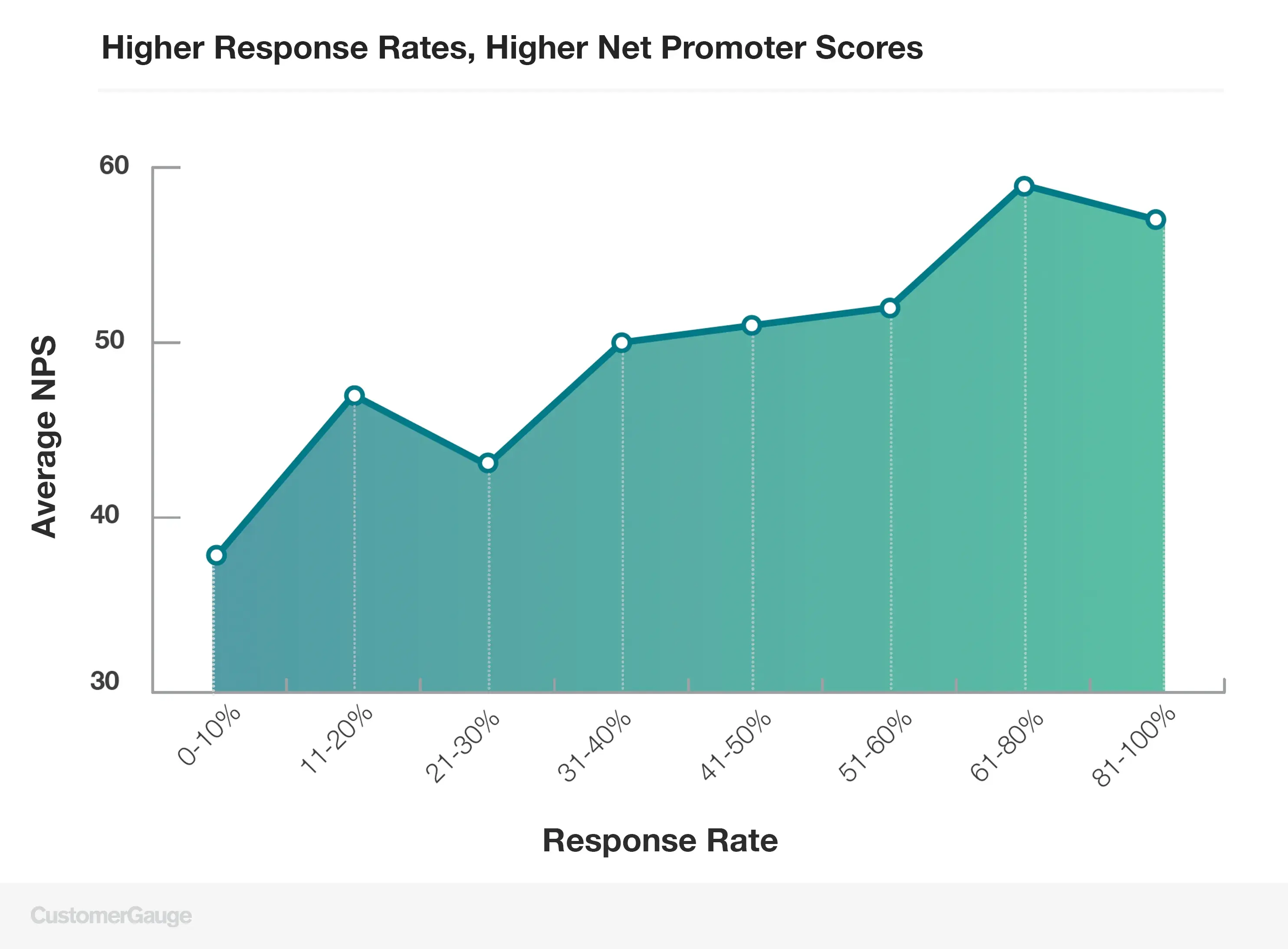
4. Optimize survey frequency
Customers don’t want to be relentlessly bothered by survey questions, obviously.
There’s an art to timing customer surveys, and they might demand higher frequency than you expect.
Here’s what we suggest:
- For B2B relationships, survey customers every quarter. It sounds a lot, but our research shows that regular relationship surveys see a 5.2% increase in retention.
Surveying based on particular transactions:
If you are measuring the CX of your customer service, send an NPS survey ten minutes after a resolution has been reached on the phone. This way, the interaction will still be fresh.
Or, if you are investing the CX of your eCommerce store, a week after the transaction is usually the best time. It gives customers a chance to test their products.
The customer experience includes every touchpoint with your business, including when you survey. Sending them at the right time will encourage more customers to complete them, therefore positively impacting your response rate.
Perfect the timing of your surveys utilizing best practices and your NPS score will have the chance to improve.
There are a lot of differences between survey types and how to approach them; you can learn more here: Relationship vs. Transactional NPS Surveys.
🔎 Expert Insight #2:
“The most challenging part is designing a user-friendly process for both customers and employees. Preliminary research on how customers would like to give their feedback is the first step.
Ask them about their preferred channel and way of delivery (text, voice, bullet points, other). Second, create the shortest survey possible, but the one that gives your team a direction to action. Third, be sure your team has the resources and power to take those actions afterward.” — Olena Iosifova, CEO at Ender Turing
5. Don’t ignore Passives and Non-Respondents
If you’re only focusing on Detractors and Promoters, your NPS score will reflect that.
Your natural instinct is to jump on Detractors and ensure you’re closing the loop with them, we get that.
However, the creator of NPS himself Fred Reichheld, and ourselves, suggest you should always consider Non-Respondents as Detractors and continue to monitor Passives — an absence of signal should be considered a high-risk signal itself.
This will provide you with a realistic understanding of your customer health.
Don’t believe us? Take a look at the impact on your NPS score if you assume non-respondents are Detractors:
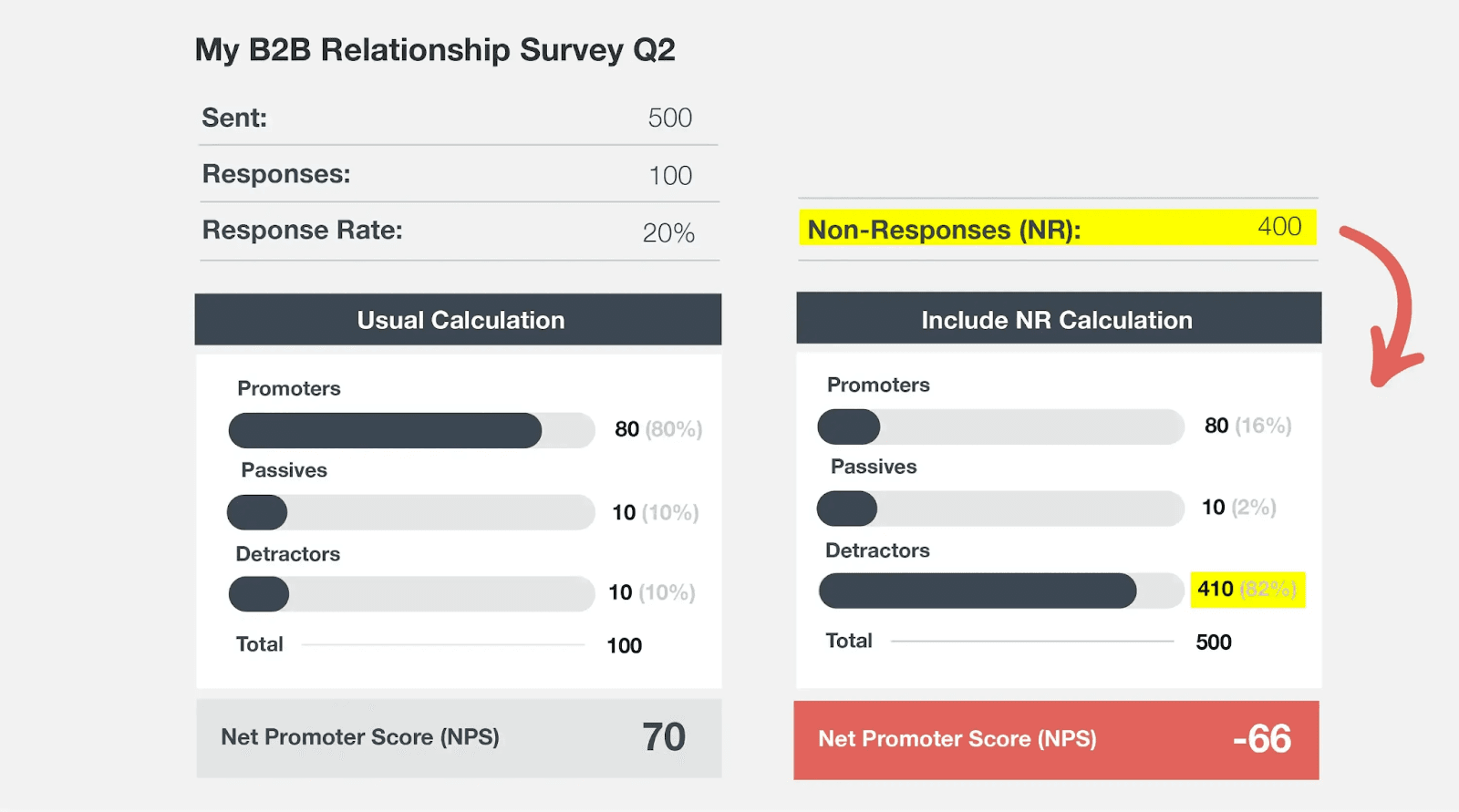
6. Choose the right survey delivery vectors
Your NPS survey response rate will also depend on which channel you send it through.
While most businesses choose email (because it’s easier for them), it doesn’t always deliver the best results.
CustomerGauge customers can use email, SMS, WhatsApp, embedded forms, pop-ups, or telephone agents as a channel to collect survey feedback.
Over time you’ll discover which delivery vector is best for your brand, just need to explore which you and your customers prefer.
Choosing the right delivery vector is important to improving NPS because if you aren’t communicating with customers using the correct channel, your response rate will suffer.
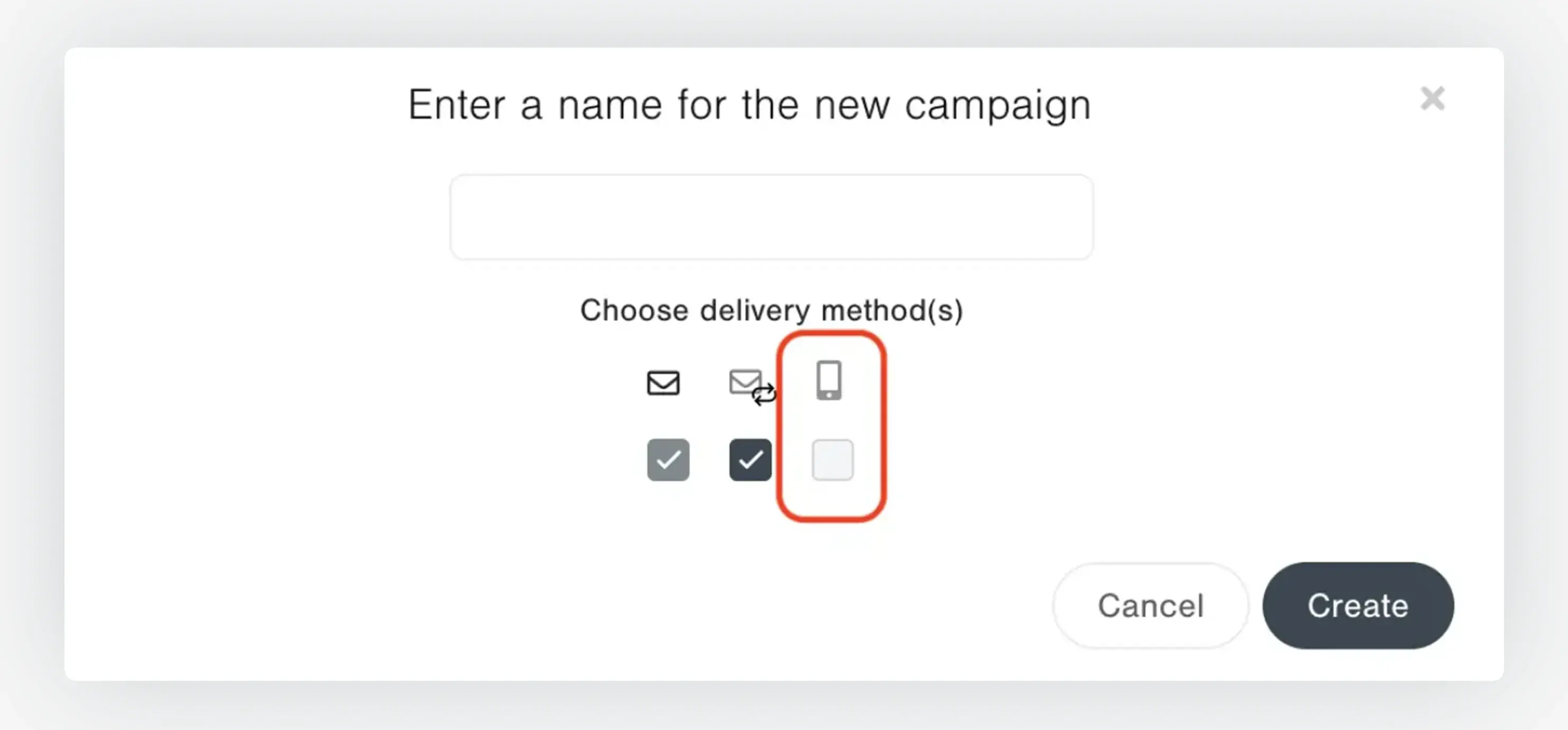
💡 Marianne Mølgaard, Service Operations Specialist at Dun & Bradstreet, shares her experience on transactional surveys and how important it is to get the data right:
Part Two: Improve NPS With Benchmarking
Now that you’ve begun to optimize your survey process, it’s time to ensure you really understand what your results are telling you.
Follow these four tips to improve the insights you’re getting from your NPS survey.
7. Know your competition inside and out
Your own company’s NPS score doesn’t exist in a vacuum. In fact, your score won’t tell you very much at all unless you put it in context.
Understanding and optimizing your NPS system starts with understanding the competition.
Now that customer experience is said to be the single biggest brand differentiator, even over price and product, knowing what others are doing is crucial.
What is their service like? Do they have a reputation for being great at a similar vertical? How can you offer current and potential customers a better experience?
Asking these questions will help you to understand where your company stands in the industry, and strategize how to improve if you’re falling short to increase your NPS score.
More than half of B2B companies are bettering their business with NPS, so it isn’t going anywhere — and they’re learning what you’re all about, too.
With our annual NPS and CX benchmarks report, you can evaluate what makes a good NPS score and see how your competition is doing.
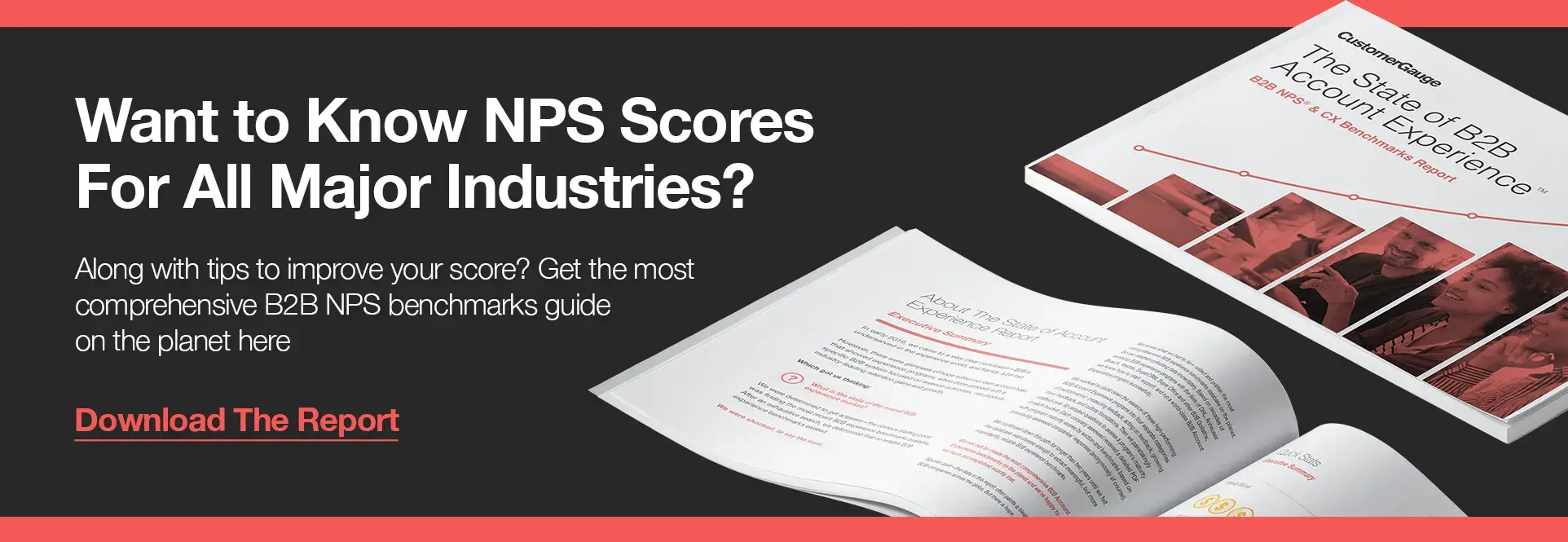
8. Benchmark Your Progress
One of the most impactful pieces of data you can measure against is your historic NPS score.
This will be the basis upon which you grow and set goals to help you grow further. By regularly collecting data on customer satisfaction, you can see how your performance is developing over time.
The best way to monitor results is by using powerful customer experience tools that let you view your progress month to month (or by quarter).
Utilizing a stacked column graph segmented by month or quarter is popular because of how they visually represent Detractors, Passives, and Promoters. With our NPS dashboard widgets, you can click into a segment and be taken right to those accounts that fall under those categories.
Part Three: Improve Your NPS Score with Analysis & Action
Finally, it’s time to act on what your customers are telling you. This is when your improvements to your NPS system will boost your CX overall.
Try these three key steps.
9. Consistently close the loop with customers
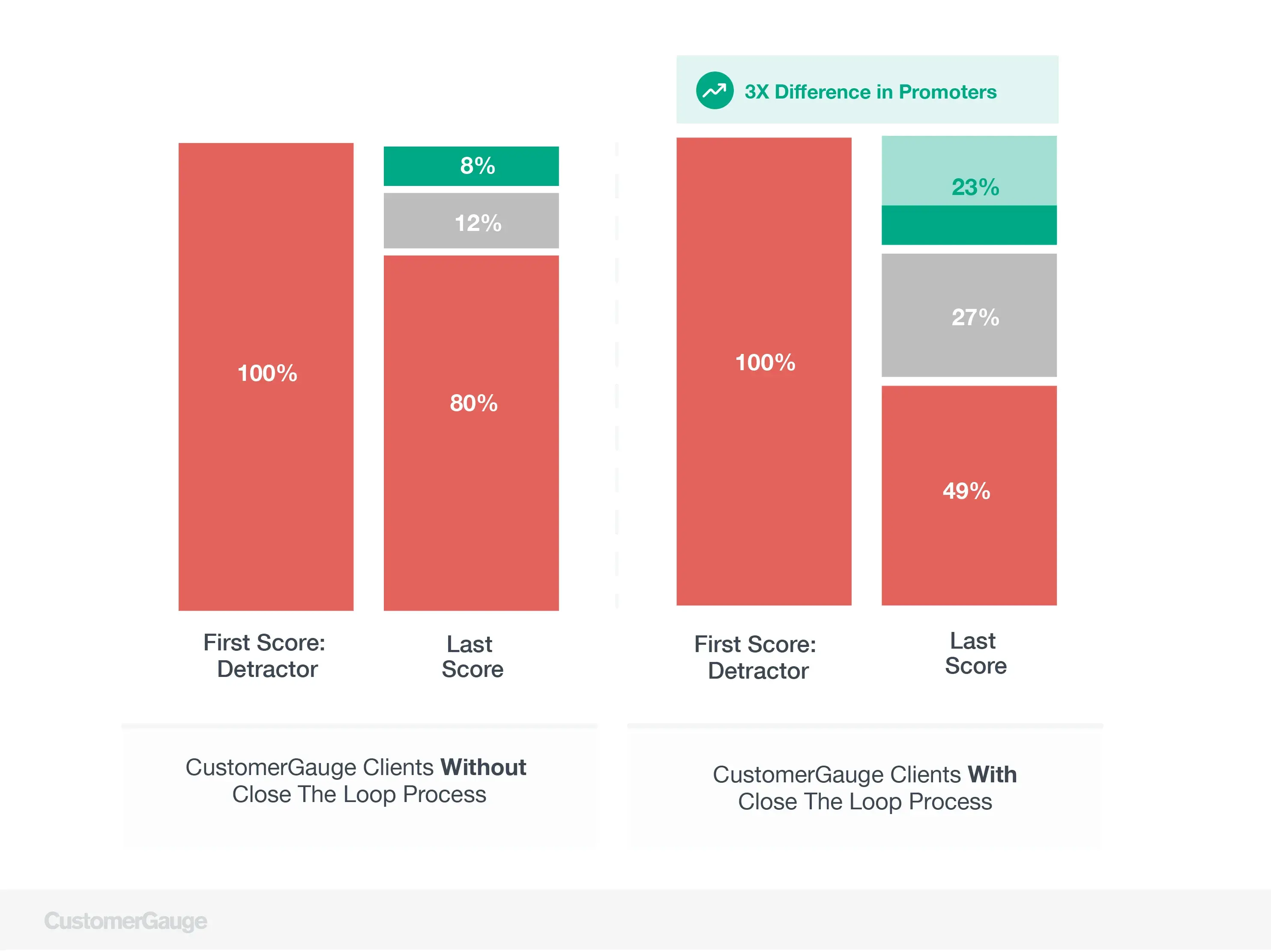
Closing the loop with customers is one of the fundamental parts of your CX efforts. In short, it means acting on your customer's feedback, whether positive or negative, and reaching out to tell them what you have done.
It’s a process that enables you to show your customers you care and through a small action, it can yield big results (aka improving NPS).
In fact, our research has shown that closing the loop within 48 hours can lead to a 12% increase in retention.
It’s also the real reason why you are running customer surveys in the first place. Customers want to feel heard and that their feedback was taken into consideration, so the more you close the loop, the happier your customers will be.
You’ll boost customer satisfaction, turn Passives into Promoters, and improve your business processes at the same time.
It’s said that 95% of companies collect customer feedback, but only 10% act on it and only 5% tell customers what they have done — don’t underestimate the impact it can have on customer loyalty.
Learn how Eaton Corporation’s closed-loop process went from 4 months to 48 hours.
🔎 Expert Insight #4:
“Make a realistic plan to really 'WOW' your promoters every 3 months and assign a dedicated team to provide honest, authentic attention monthly to every detractor. Always get back to them, even if there is no direct solution to their question.”— Charlene Soerodimedjo, Managing Partner at DOOR Advisory
10. Conduct Root Cause Analysis
Closing the loop can also help with what’s known as root cause analysis. This is when you dig deep into a customer problem to understand its underlying trigger.
Improving your NPS score comes down to customer satisfaction, so if you can dig as deep as you can into a customer’s pain point, it’s likely you’ll find a solution — which will make that customer happy and in turn, help to raise NPS.
You can use the 'Five Whys' technique to do exactly this. It may sound just too easy, but by simply asking “why?” you can better identify problems that are causing you wider difficulties.
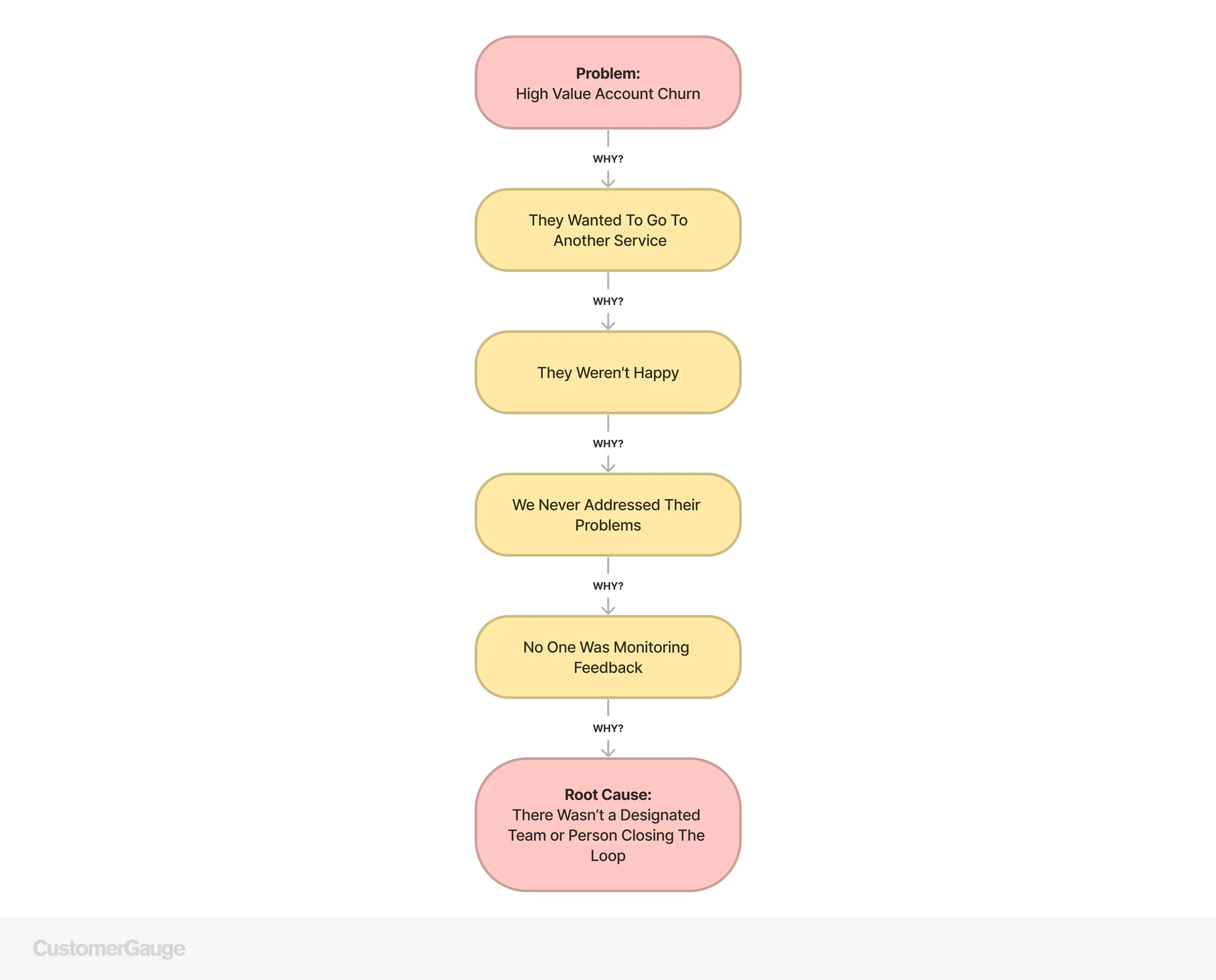
Start with your customer’s problem, and ask why that has happened. Whatever answer you have found, ask why that is the case. Then repeat the question “why?” three more times, with each answer forming the basis of the next question.
You can either do this with customers in a focus group or as an exercise in your team.
11. Tie Your NPS to Revenue
A core element that we practice what we preach here at CustomerGauge is tying NPS to revenue. We call this Monetized Net Promoter® and it was created to provide companies with a direct path to growth.
By measuring Promoters, Passives, and Detractors against financial data, you have a new opportunity to:
✅ Learn the portion of revenue that is at risk
✅ Know high-priority CX to focus on
✅ Understand which opportunities could lead to the highest growth
Unveiling this data is key to improving NPS — you’ll uncover a whole new side of your business you didn’t see before tying your customer metrics to revenue, which allows you to implement efforts you didn’t before, too.
But according to CustomerGauge research, 70% of businesses don’t tie their CX data to their revenue.
That means that they don’t have any idea how much their CX efforts are earning them, or how much they’re losing due to negative experiences — a huge missed opportunity for improving NPS, so don’t be one of them.
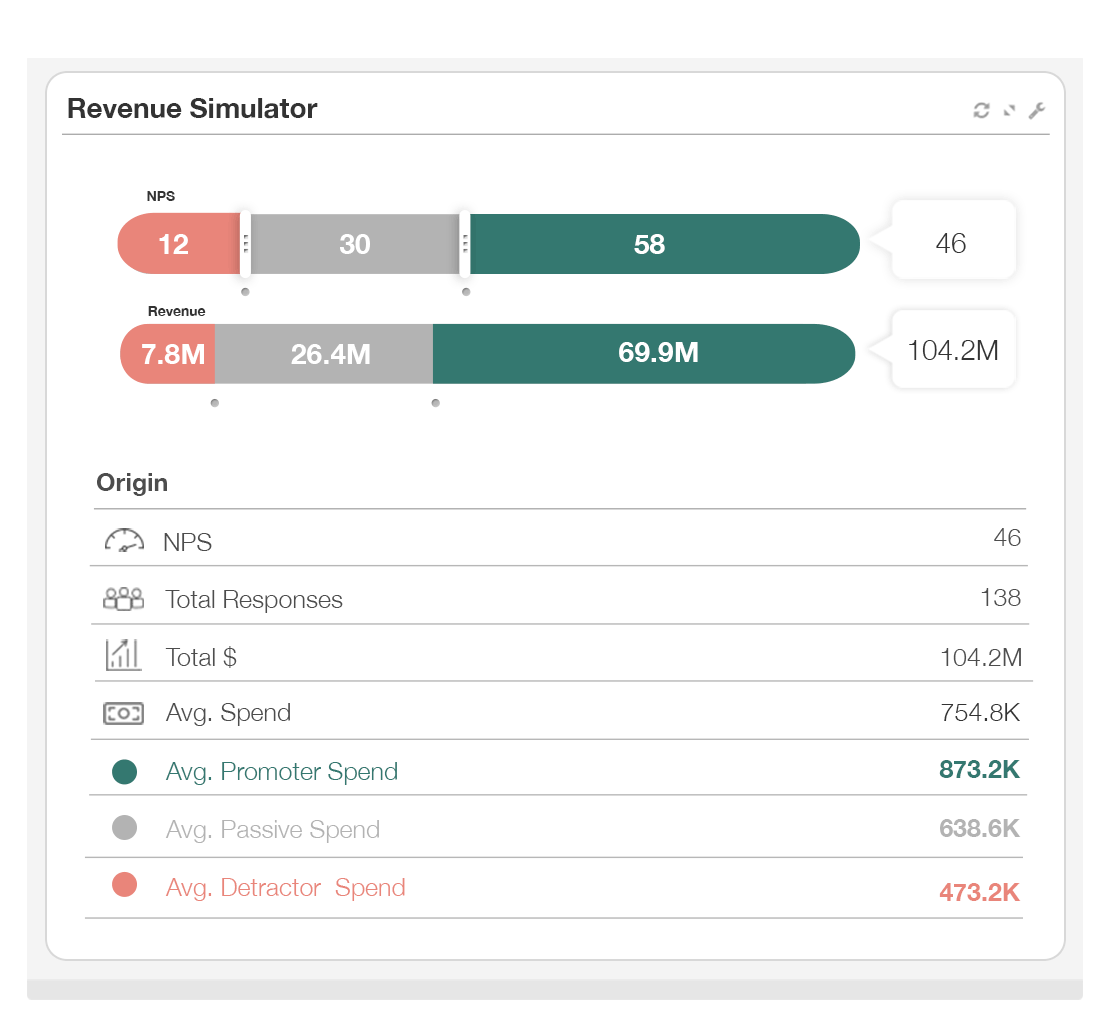
By linking your CX to your bottom line, you’ll achieve greater C-suite alignment, make better decisions based on revenue, and make the case for expanding CX your program.
You’ll also be able to identify your detractors and your promoters, or the value of your most loyal clients and how much revenue is at risk from churn.
This is essential to your overall CX program as it allows you to make better use of your resources.
When 80% of revenue comes from 20% of customers, it’s not something you can afford to neglect.
🔎 Expert Insight #3:
“Prioritize by Revenue Impact (+/-) e.g. Hidden Customer Defection (mostly Passives) could be your biggest Revenue risk in some competitive industries…Anchoring focus by Revenue impact allows the biggest ROI for efforts (and NPS) even if you're unable to Close the Loop with every customer.”— Roger Nicholas, Sales and Business Development at Cite Up Limited
12. Ensure buy-in throughout your organization
If you’re currently a program champion struggling to convince the company why focusing on NPS is important, we’ve been there.
The best place to start is to find value in your program and share how each department or team member will benefit from it. Your NPS won’t improve unless your entire company believes in it, too, especially upper management.
While it’s (hopefully) obvious that your customer experience strategy has to be customer-centric, it has to be employee-centric, too! When it’s embedded in the culture of the company, that’s when NPS thrives.
Your CX should never just be the concern of your customer service team. Rather, it should have active buy-in from everyone in your organization, from the CEO to frontline staff.
💡 Hear From an Expert:
Jay Woody, Chief Medical Officer and Founder of Intuitive Health, has ensured ongoing internal buy-in for his NPS system for over 10 years.
He shared with us how he motivates his company to be sold on what he’s selling:
How to Improve Your NPS with CustomerGauge
At CustomerGauge, we can give you the tools and methods to reach new heights with your NPS program. Our NPS software is custom-built for the nuances of B2B and B2B2C accounts. Learn more about it here.
